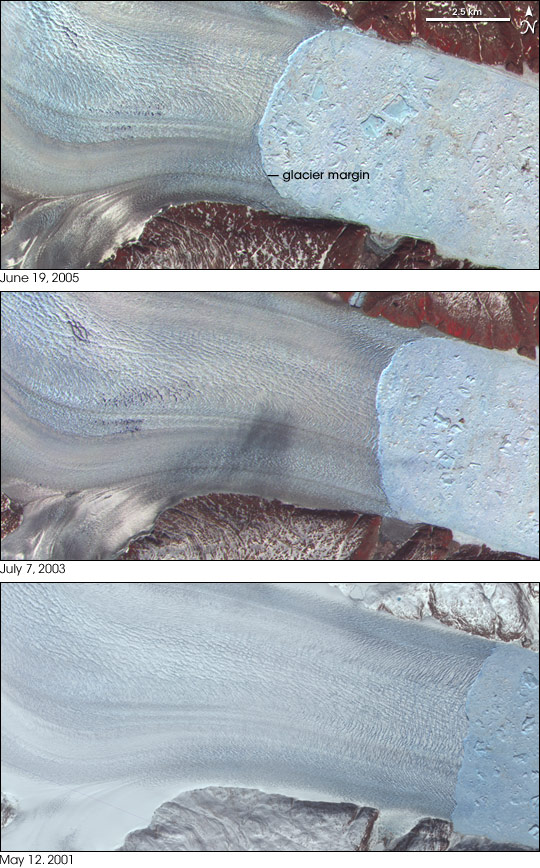glacial earthquakes on:
[Wikipedia]
[Google]
[Amazon]
 Glacial earthquakes are earthquakes as large as magnitude 5.1 that occur in glaciated areas where the
Glacial earthquakes are earthquakes as large as magnitude 5.1 that occur in glaciated areas where the
 Glacial earthquakes are earthquakes as large as magnitude 5.1 that occur in glaciated areas where the
Glacial earthquakes are earthquakes as large as magnitude 5.1 that occur in glaciated areas where the glacier
A glacier (; ) is a persistent body of dense ice that is constantly moving under its own weight. A glacier forms where the accumulation of snow exceeds its Ablation#Glaciology, ablation over many years, often Century, centuries. It acquires dis ...
moves faster than one kilometer per year.
The number of glacial earthquakes in Greenland
Greenland ( kl, Kalaallit Nunaat, ; da, Grønland, ) is an island country in North America that is part of the Kingdom of Denmark. It is located between the Arctic and Atlantic oceans, east of the Canadian Arctic Archipelago. Greenland is t ...
shows a peak every year in July, August and September, and the number is increasing over time. In a study using data from January 1993 through October 2005, more events were detected every year since 2002, and twice as many events were recorded in 2005 as there were in any other year. This increase in the numbers of glacial earthquakes in Greenland may be a response to global warming
In common usage, climate change describes global warming—the ongoing increase in global average temperature—and its effects on Earth's climate system. Climate change in a broader sense also includes previous long-term changes to E ...
.
Seismic waves are also generated by the Whillans Ice Stream, a large, fast-moving river of ice pouring from the West Antarctic Ice Sheet into the Ross Ice Shelf
The Ross Ice Shelf is the largest ice shelf of Antarctica (, an area of roughly and about across: about the size of France). It is several hundred metres thick. The nearly vertical ice front to the open sea is more than long, and between hi ...
. Two bursts of seismic waves are released every day, each one equivalent to a magnitude 7 earthquake, and are seemingly related to the tidal action
The tidal force is a gravitational effect that stretches a body along the line towards the center of mass of another body due to a gradient (difference in strength) in gravitational field from the other body; it is responsible for diverse phenomen ...
of the Ross Sea. During each event a region of the glacier moves as much as over about 25 minutes, remains still for 12 hours, then moves another half-meter. The seismic waves are recorded at seismographs around Antarctica
Antarctica () is Earth's southernmost and least-populated continent. Situated almost entirely south of the Antarctic Circle and surrounded by the Southern Ocean, it contains the geographic South Pole. Antarctica is the fifth-largest contine ...
, and even as far away as Australia
Australia, officially the Commonwealth of Australia, is a Sovereign state, sovereign country comprising the mainland of the Australia (continent), Australian continent, the island of Tasmania, and numerous List of islands of Australia, sma ...
, a distance of more than 6,400 kilometers. Because the movement takes place over such a long period of time—10 to 25 minutes—it cannot be felt by scientists standing on the moving glacier.http://www.scientificamerican.com/article.cfm?id=monitoring-antarctica-ice-movement-is-sticky-business Scientific American "Monitoring Antarctic Ice Movement Is a Sticky Business" June 4, 2008 It is not known if these events are related to global warming.
See also
*Cryoseism
A cryoseism, ice quake or frost quake, is a seismic event caused by a sudden cracking action in frozen soil or rock saturated with water or ice, or by stresses generated at frozen lakes.
As water drains into the ground, it may eventually freeze ...
References
Ice sheets Bodies of ice of Greenland Seismology Glaciers Effects of climate change Environment of the Arctic {{Earthquake-stub